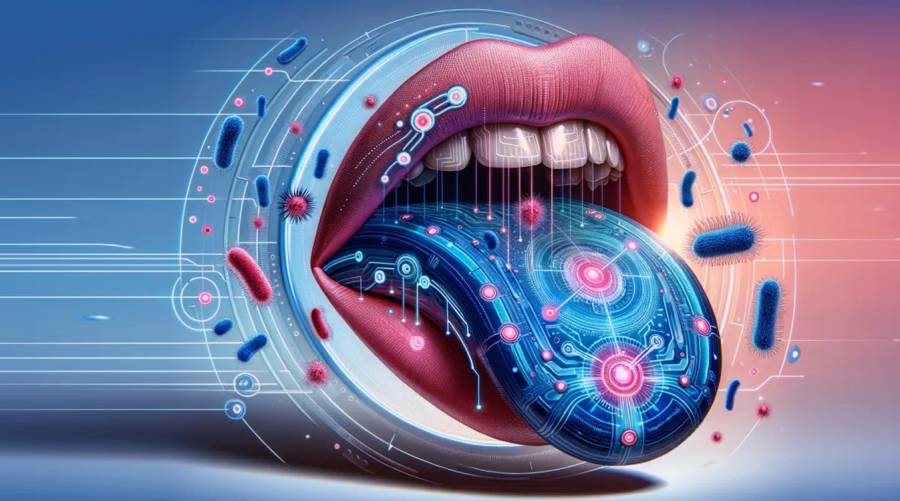'Artificial tongue' introduced to neutralize mouth bacteria

A recent groundbreaking research, conducted by Na Lu, Zisheng Tang, and their team, published in ACS Applied Materials & Interfaces, has introduced a chemical sensor array, akin to an artificial tongue, proficient in distinguishing various strains of dental bacteria and rendering them inactive.
Funded by different institutions, including the National Natural Science Foundation of China, the research highlights a promising avenue for combating oral bacterial infections.
The presence of bacteria in the oral cavity can cause various issues ranging from tooth decay to halitosis. Yet, identifying and addressing these microorganisms can often pose challenges, both in terms of complexity and cost.
The study introduces an innovative solution in the form of an "artificial tongue" designed not only to detect but also to neutralize common oral bacteria.
Traditionally, identifying the bacteria causing oral ailments such as cavities and periodontitis involves labor-intensive procedures like culturing or DNA marker detection, requiring sophisticated equipment. Seeking a more straightforward and cost-effective alternative, the researchers turned to electronic or artificial tongues—sensor arrays capable of replicating the multifaceted functions of a real tongue.
Expanding on prior advancements, the research team incorporated the capability to neutralize the detected dental bacteria into the ‘artificial tongue.’
Central to this breakthrough is a nanozyme—a nanoscale particle mimicking natural enzymes—crafted from iron oxide particles coated with DNA strands. Upon introduction to a solution containing hydrogen peroxide and a colorless indicator, the presence of nanozymes triggers a distinct color change, transitioning from colorless to vivid blue. However, bacterial adhesion to the DNA-coated nanozymes impedes their reactivity, resulting in a diminished color change—a distinctive signature for each bacterial strain.
To validate their methodology, the researchers synthesized samples containing 11 different species of dental bacteria in artificial saliva. Impressively, the sensor array accurately identified all present bacteria.
Employing the DNA-encoded nanozyme sensor array, the team successfully differentiated between dental plaque samples from healthy volunteers and those with cavities.
Crucially, the nanozyme sensor array exhibited antibacterial properties against the tested bacterial strains. In solutions containing the nanozyme system, three typical bacterial species were deactivated, a feat absent in control groups lacking nanozymes.
Scanning electron microscopy images provided compelling evidence of the nanozyme system's ability to disrupt bacterial membranes, hinting at its potential for diagnosing and treating bacterial dental diseases.
Trending
Popular
Revolutionary HIV drug can drastically cut treatment costs
-
AI model to improve EEG reading for ICU ...
04:00 PM, 5 Jun, 2024 -
Study links weight-neutral eating ...
04:00 PM, 11 May, 2024 -
Researchers strive to expand telehealth ...
04:00 PM, 11 May, 2024 -
UCFS clinical trial to test efficacy of ...
03:11 PM, 23 Apr, 2024




